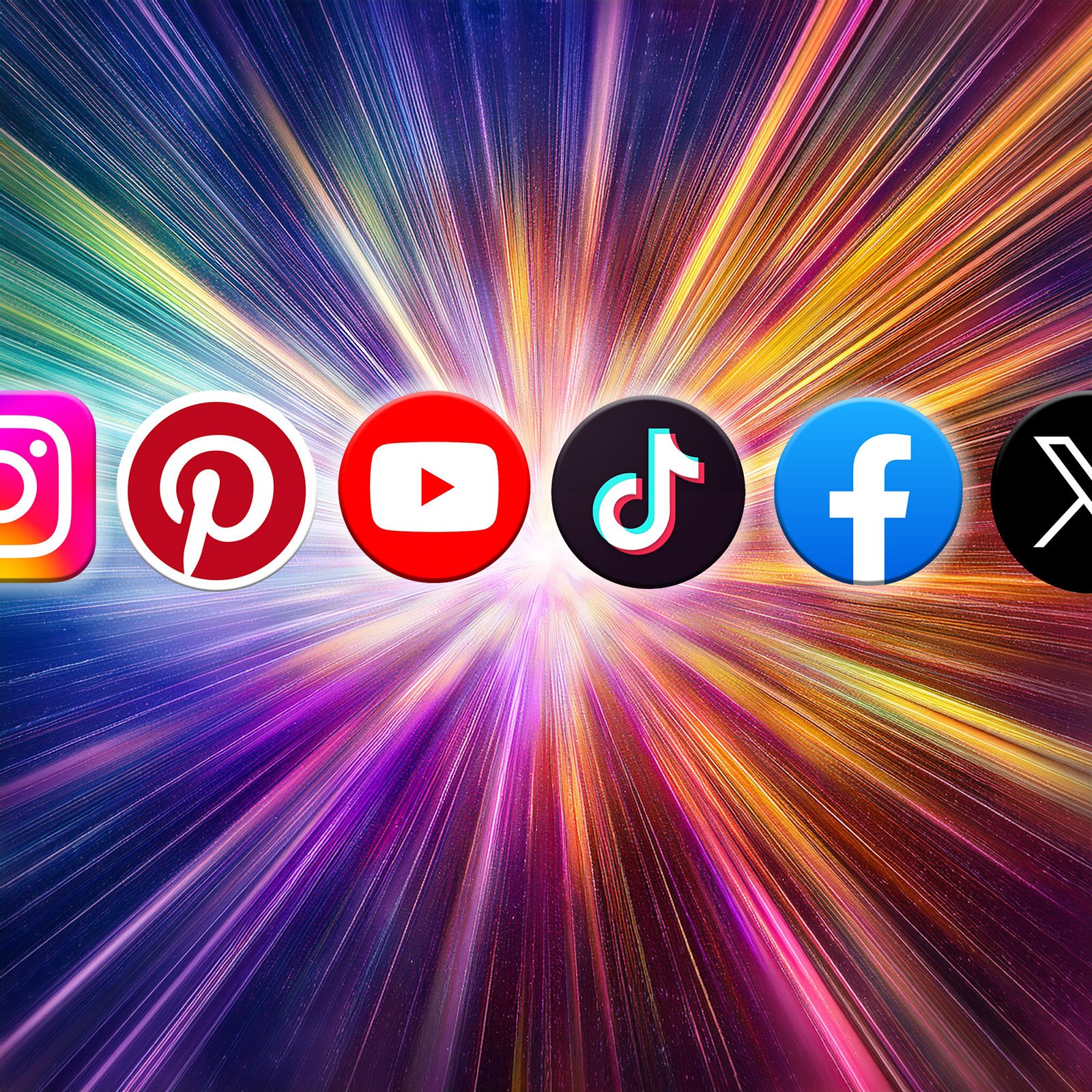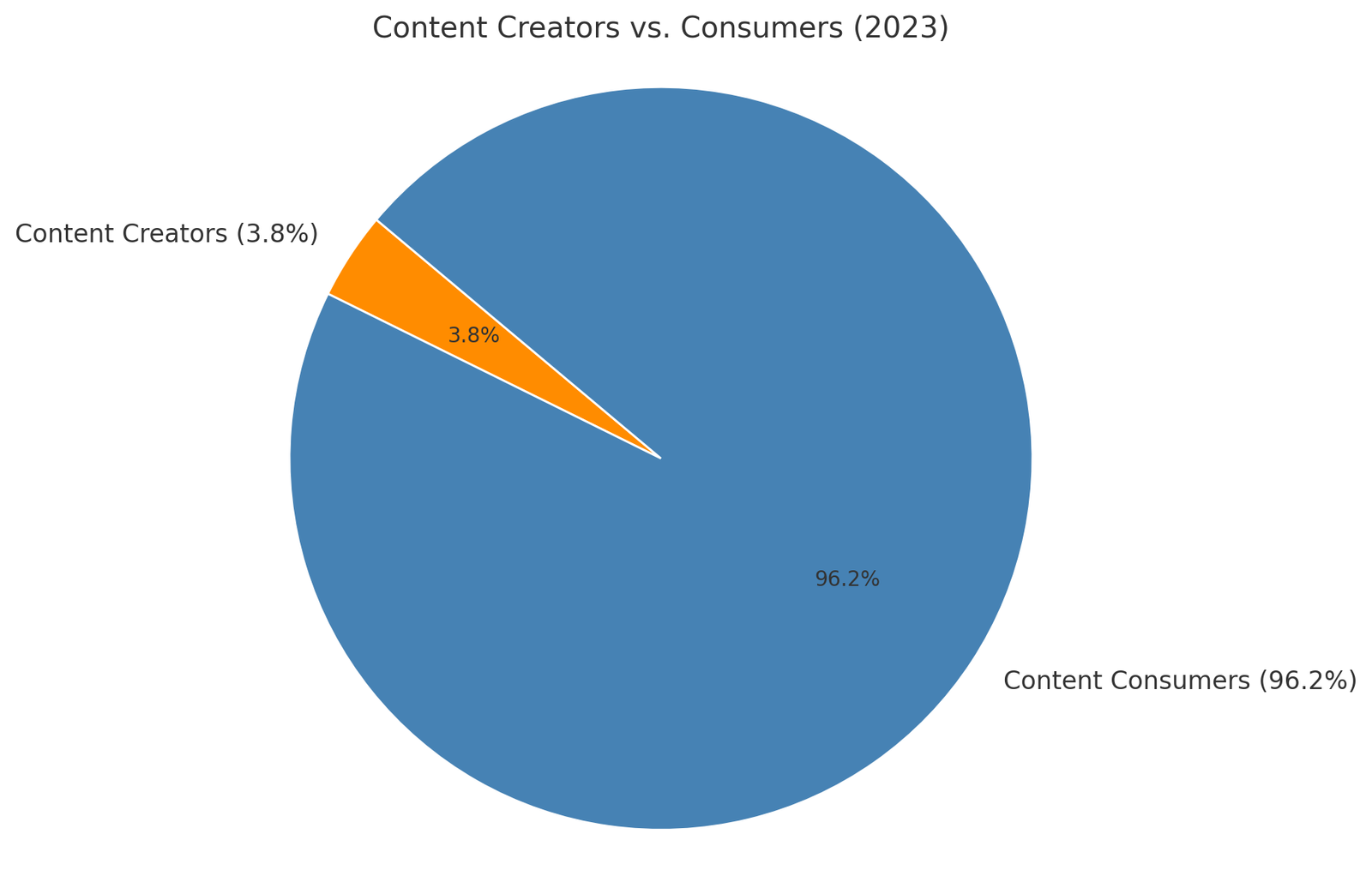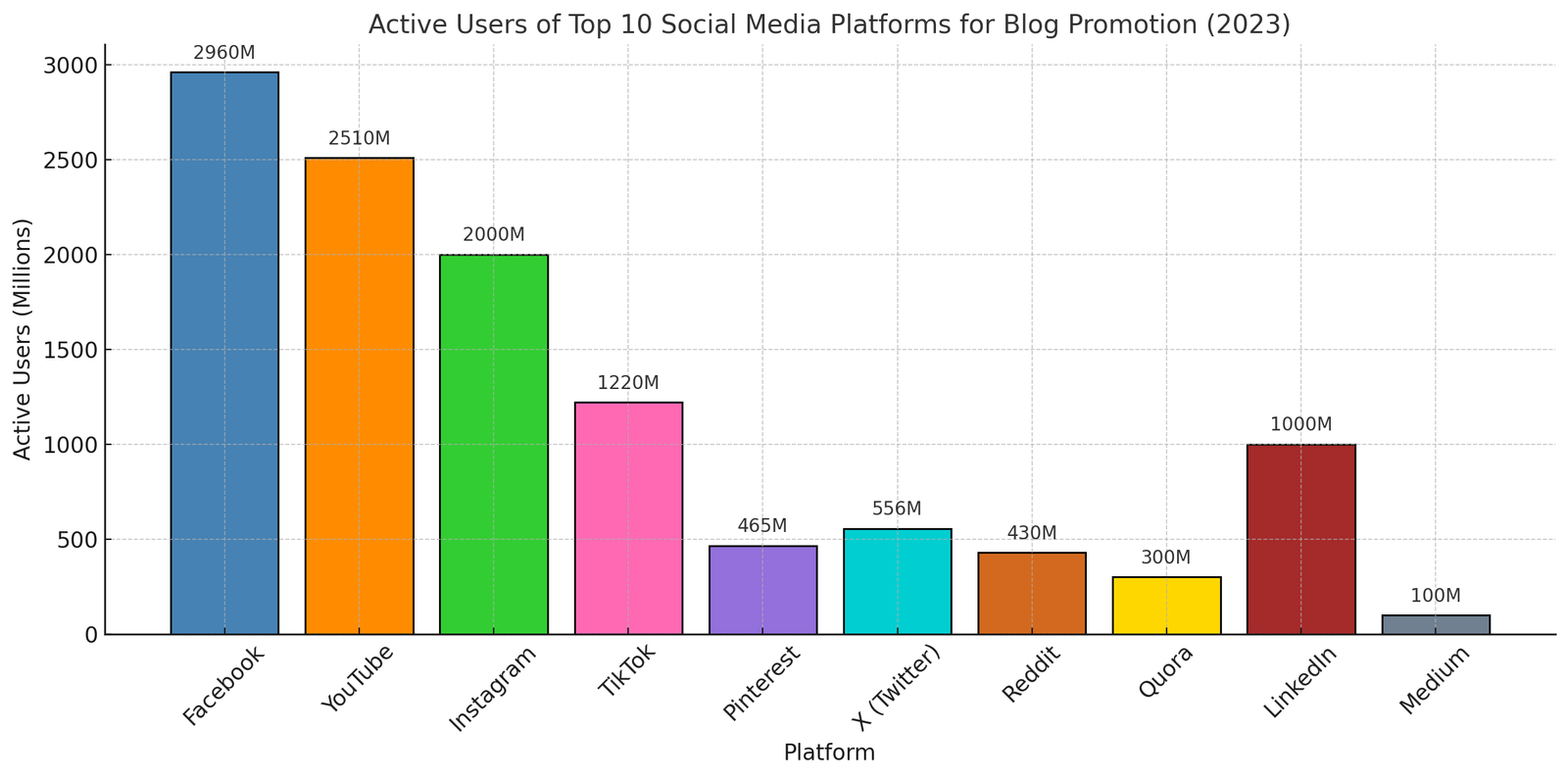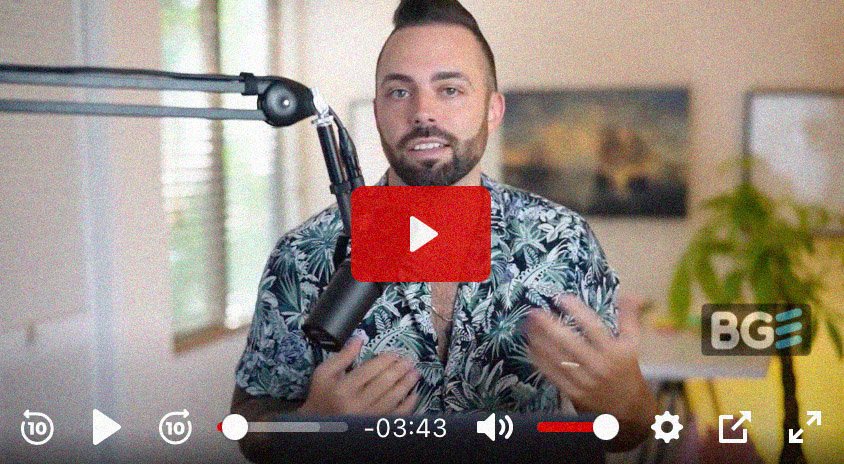What are the best social media platforms to drive traffic to your blog?
Bloggers face no shortage of options when it comes to promoting their work on social media. But not every platform delivers the same kind of audience or traffic.
In this post, we’ll compare the major platforms through a blogger’s lens: looking at their user base, demographics, strengths, and limitations.
At a glance:
- Pinterest works like a visual search engine and drives long-tail blog traffic.
- YouTube rewards depth and is ideal for tutorials or storytelling.
- Instagram and TikTok excel at short-form discovery but require consistent posting.
- LinkedIn is best for B2B and professional niches.
- Twitter/X still offers reach, but virality fades fast.
- Facebook works mainly for communities and groups.
- Reddit provides authentic engagement but requires careful participation to avoid being flagged as self-promotional.
- Quora can drive targeted traffic through detailed answers, though growth is usually slow.
- Medium offers built-in readership, but monetization and SEO control are limited compared to self-hosted blogs.
This overview will help you see which platforms deserve your focus in 2025.

Why promoting your blog on social media matters more than ever
There are over 1.8 billion websites registered worldwide, but only around 200 million are actively maintained and visible to readers. The vast majority, roughly 80%, are parked, inactive, or abandoned. That means nearly 4 out of 5 websites are just digital noise, making discoverability a real challenge for new blogs.
On top of that, around 250,000 new websites go live every single day, adding to an already saturated digital landscape. In a space that crowded, you can’t just “publish and pray” anymore. Visibility matters, and that’s where social media comes in.

Growth of internet users versus the number of websites from 2000 to 2022: the number of websites peaked at approximately 1.77 billion in 2018 before declining slightly. Meanwhile, internet users surpassed 5.3 billion by 2022, reflecting the steady global rise in online participation.

As of 2023, there are approximately 207 million content creators worldwide. This means that roughly 3.8% of internet users are actively creating content, while the remaining 96.2% are primarily consumers. This disparity is further highlighted by the “1% rule” in online communities, which suggests that only 1% of users actively create content, 9% engage occasionally, and the remaining 90% are passive consumers.
Note: A sign of hope for content creators
The relatively low percentage of content creators compared to consumers indicates a significant opportunity. With fewer creators catering to a vast audience, there’s less competition for attention, allowing quality content to stand out more easily.
Moreover, the decline in the number of active websites—from a peak of 1.77 billion in 2018 to about 1.3 billion in 2023—suggests that many have stepped back from maintaining websites, possibly due to the effort required. This reduction means that dedicated content creators face less noise, making it easier to capture and retain audience attention.
For aspiring content creators, this landscape is encouraging. The vast majority of internet users are seeking content to consume, and with fewer creators producing high-quality material, there’s a clear demand waiting to be met.
By consistently delivering valuable and engaging content, creators can build a loyal audience and establish a strong online presence. The key lies in understanding your audience’s needs and providing content that resonates with them.
Having just started a new blog, the next step is to promote it through social media. Ideally, you want to do that without spending any money on ads.
But not all platforms are equal when it comes to driving traffic and engagement organically. Some are fast-paced and viral-driven, others reward depth and consistency. Some are perfect for building a personal brand, while others quietly send evergreen traffic your way over time.
And here’s a critical shift to be aware of:
As Neil Patel pointed out, Google search traffic is steadily declining, especially for newer sites. In contrast, social media platforms are becoming the go-to discovery engines, especially for younger users and niche topics.
That means if you want people to find your blog, you can no longer rely on SEO alone.
So let’s start with a quick overview of the major social media platforms: Pinterest, X (Twitter), Instagram, Facebook, YouTube, TikTok, Reddit, Quora, LinkedIn, and Medium, through the lens of what could actually move the needle for your blog in 2025.
- Monthly active users: ~553 million
- Primary demographics:
- ~69% female
- Gen Z fastest-growing group
- Strengths:
- Evergreen traffic potential
- Users actively search for content ideas
- Pins can drive thousands of clicks over time
- Weaknesses:
- Requires appealing vertical graphics
- Not all niches perform equally well
- Slower initial growth without consistent effort
For most bloggers, Pinterest is a must-try platform for organic growth. It’s a powerhouse for evergreen traffic, especially in visual niches, if you invest in compelling pins. It works best with timeless blog content, and has the potential to become a top traffic driver, significantly boosting your audience growth over time.
X (Twitter)
- Monthly active users: ~600 million
- Primary demographics:
- Ages 18–34 dominant (~62%)
- Balanced gender (~50/50)
- Strengths:
- Real-time sharing & engagement
- Easy networking with other creators
- Hashtags and viral potential via threads
- Weaknesses:
- Very short content lifespan
- Tweets with links may be downranked
- Building an audience can be slow
X (Twitter) excels at real-time engagement and networking, but it demands consistency. Don’t rely on it as your primary traffic engine, instead, use it to build relationships, share quick insights, and spark curiosity about your blog. Over time, these touchpoints can help funnel a loyal, engaged readership to your site.
- Monthly active users: 2 billion
- Primary demographics:
- Ages 18–34 dominant (~62%)
- Balanced gender (~50/50)
- Strengths:
- Visual storytelling builds brand trust
- High engagement through Stories and Reels
- Influencer-friendly with collab potential
- Weaknesses:
- Hard to drive blog traffic (limited linking)
- High content creation workload
- Discovery via algorithm can be unpredictable
Instagram is a relationship-first platform. Great for building brand personality, trust, and loyalty through visual content. It’s not a top performer for direct traffic, but the ROI shows up in stronger brand recognition and moderate, long-term blog growth. Use it to connect, not just convert.
- Monthly active users: 3.07 billion
- Primary demographics:
- Ages 25–34 largest group (31%)
- ~57% male
- Strengths:
- Massive reach across all age groups
- Groups are great for community and traffic
- Content variety: text, image, video, live, etc.
- Weaknesses:
- Organic reach on Pages is very limited
- Younger users are moving away
- Needs strong community to see results
Facebook offers unmatched reach and community-building potential, especially through groups.
It’s a versatile platform that can deliver decent traffic while also fostering a deeper connection around your blog brand. Just be prepared to invest time in nurturing engagement to see long-term results.
YouTube
- Monthly active users: 2.5+ billion
- Primary demographics:
- Ages 18–34 sizable (top ~22%)
- ~54% male
- Strengths:
- High engagement and time spent (avg 49 min/day)
- Great for storytelling and tutorials
- Can repurpose blog content as video
- Weaknesses:
- High production effort
- Less direct blog traffic (platform keeps viewers)
- Growth requires consistency and SEO strategy
YouTube gives you access to a massive audience and builds personal connections through video, but it’s not a quick win. It requires significant upfront effort and can be slow to deliver traffic early on. But if you stick with it, it has the potential to unlock deep engagement and long-term growth for your blog.
TikTok
- Monthly active users: ~1.6 billion
- Primary demographics:
- Ages 18–34 majority
- ~56% male
- Strengths:
- Extremely viral short-form content
- High attention span and engagement
- Great for personality-driven brands
- Weaknesses:
- Minimal link opportunities
- Video-only content
- Hard to convert viewers to readers
TikTok is one of the most accessible platforms for early visibility and audience growth, even if you’re starting from scratch. With consistent effort, it’s a great place to test ideas, build trust, and start showing up before you’re well-known. Done right, it can become the top of your blog’s growth engine.
- Monthly active users: ~500 million (logged-in)
- Primary demographics:
- Ages 18–29 dominant
- ~60% male
- Strengths:
- Highly engaged niche communities
- Viral upvote potential
- Great for discussion and idea validation
- Weaknesses:
- Very anti-spam/self-promotion
- Unpredictable, harsh on marketers
- Time-consuming to earn trust
Reddit can deliver spikes of highly targeted traffic if you genuinely engage in communities. Expect a high-risk high-reward scenario. When done thoughtfully, Reddit can send you surges of traffic and very interested readers. Many bloggers have a love-hate with Reddit: it can be a source of their record traffic day, and also a source of humbling critiques.
Quora
- Monthly active users: 400 million
- Primary demographics:
- Ages 25–34 largest group (~30%)
- ~57% male
- Strengths:
- Showcase expertise in detailed answers
- Answers can rank on Google and stay visible
- Good for long-term, targeted traffic
- Weaknesses:
- Traffic volume is moderate
- Time-intensive writing
- Must be careful with link placement
Quora delivers slow but steady trickle traffic by helping you show up where people are actively seeking answers. For broad-interest niches like personal finance, it’s a subtle but effective way to funnel qualified readers to your blog and build your credibility over time. You might not notice the impact daily, but a year later, you’ll see the traffic and reputation quietly adding up.
- Monthly active users: ~930 million
- Primary demographics:
- Ages 25–34 dominant (~50%)
- ~56% male
- Strengths:
- Professional, B2B-focused audience
- Great for authority building and thought leadership
- Organic post reach can be strong with niche content
- Weaknesses:
- Smaller general audience
- Best for professional topics
- Engagement can be inconsistent
LinkedIn helps you establish professional authority and reach an audience with a business mindset, even if the numbers aren’t massive. If your blog content resonates with professionals, LinkedIn is a valuable secondary channel for both traffic and brand positioning. It’s more about credibility and connections than clicks, but it earns long-term trust.
Medium
- Monthly active users: ~100 million
- Primary demographics:
- Millennials and Gen X (ages 25–54)
- Skews toward educated, urban professionals
- Strengths:
- Great for long-form, authority-style content
- Medium’s algorithm can recommend posts to new readers
- Built-in audience with potential for organic discovery
- Weaknesses:
- Traffic can be inconsistent without publication support
- Links out to your blog are limited and less SEO-friendly
- To earn money, you need to join the Medium Partner Program and keep content behind their paywall
Medium is ideal if your content fits a thoughtful, essay-style format and you’re looking to build reputation or tap into an existing reader base. It’s a great platform for credibility and visibility, but less effective for direct blog traffic, unless used strategically. Cross-link carefully and treat Medium as a stage, not just a traffic tool.
So, which one should you pick?
Promoting a blog organically on social media is a marathon, not a sprint. Different platforms excel at different things.
For the personal finance and passive income niche, a balanced approach could be:
- use Pinterest to drive consistent blog visitors interested in money tips,
- use Twitter and Reddit to engage with the finance community and occasionally share insights that draw people in,
- use YouTube or Instagram to put a face to your brand and explain complex topics in an accessible way,
- and use LinkedIn to share credibility-boosting content (like how your advice can help in careers or entrepreneurship).
Over time, these channels reinforce each other: a YouTube viewer becomes a blog reader, a Quora reader follows you on Twitter, a LinkedIn connection invites you on a webinar, and so on, building your brand.

Relative global usage share of the 10 major social media platforms: Facebook (2.96 billion monthly users) and YouTube (2.51 billion) dominate the landscape. Instagram, TikTok, and LinkedIn form a strong middle tier. Pinterest, X (Twitter), Reddit, Quora, and Medium have smaller but still meaningful audiences. Especially valuable for niche targeting and thought leadership.
Whichever platform you focus on, consistency, authenticity, and understanding your audience’s mindset on that platform are crucial.
Track your results (which platform is bringing most traffic or engagement) and refine your strategy accordingly.
Note: In the following posts, we will study each platform—one by one—sharing practical tips, real examples, and platform-specific strategies to help you make the most of your time and effort.
🎧
Prefer to listen? This topic is also explored in one of my podcast episodes:
Blog promotion on social media: FAQ
Sources:
- Internet Live Stats: Total Number of Websites
Real-time counter showing the number of active and inactive websites worldwide. - Siteefy: How Many Websites Are There in 2025?
Explains how many websites exist, how many are active, and daily new site creation trends. - Statista: Monthly Active Users of Social Media Platforms in 2024–2025
Latest user counts and comparisons across leading global social platforms. - DataReportal: Digital 2024 Global Overview Report
Comprehensive yearly digital report covering internet, social media, and mobile usage worldwide. - Hootsuite: Social Media Demographics to Know in 2024
Breakdown of audience demographics across major platforms, useful for targeting content. - Pew Research Center: Social Media Use by Age and Gender
Survey-based insights into social media usage trends across U.S. demographics. - HubSpot Blog: Social Media Platforms Marketers Should Watch in 2025
Offers insights and data on which social media platforms are worth focusing on right now. Updated in April 2025, it highlights trends in virality, formats like short‑form video, and emerging platforms such as Threads and Lemon8. - Sprout Social: Which Social Platform Drives the Most Traffic?
Examines which social channels send the most referral traffic to websites. - Neil Patel: How to Find The Most Profitable Social Media Platform For Your Business
Breaks down how to evaluate social platforms based on ROI, audience targeting, and conversion potential, with examples of strategies that drive business growth. - Neil Patel: Google’s Golden Age is Coming to an End
Explores Google’s declining dominance and the importance of diversifying with social traffic. - Backlinko: YouTube User Stats & Engagement Data
Data-driven breakdown of YouTube’s user base and engagement patterns. - Reddit Ads Help Center: Community Usage Insights
Reddit’s own resources on audience targeting, ad options, and community engagement.
Great to have you here! Feel free to leave your thoughts in the comments.
Hello, I’m John Dawson, a graphic designer (for a little while longer) and the writer behind DawsonDecoded, where I share hands-on insights on AI, blogging, social media, and whatever else crosses my mind.”
Get new posts by email when they’re worth sharing.
No spam.
More on blogging:
How to start a blog and find your first readers (part 3)
Reading Time: 9 minutesMake it look and feel professional: pick a lightweight theme, set a basic brand kit, and publish the must‑have pages.
How to fact-check your blog post
Reading Time: 5 minutesFact-checking protects both you and your readers. This simple process allows you to separate facts from opinions, verify claims, and add safeguards so your published content remains accurate, credible, and trustworthy.
Can you still make a living from a blog in 2025?
Reading Time: 5 minutesBetween viral promises and reality, can a blog still generate a viable income in 2025? Here’s what the numbers say.
Blogging with AI
Reading Time: 4 minutesAI can speed up ideas, drafts, and edits, but it should assist rather than replace you. Keep your voice, verify facts, and add your perspective so posts stay authentic and useful.
How to start a blog and find your first readers (part 2)
Reading Time: 8 minutesIn Part 2 of this beginner’s guide, we move from idea to reality by getting your blog online. You’ll learn what domains and hosting actually are, and how to install WordPress in just a few clicks.
How to start a blog and find your first readers (part 1)
Reading Time: 6 minutesLearn how to choose a blog niche you’ll love and a name that can grow with you, the first step in building a successful blog.
More on blogging:
You might like:
Words that are mine
Reading Time: 2 minutesAfter months of writing mostly for algorithms and sales funnels, I stopped obsessing over online income and started writing in my own voice.
Eight months chasing a mirage
Reading Time: 3 minutesEight months in, I’m changing course. I’m going back to casual blogging and stepping away from the commercial / affiliate angle. The pressure’s off, and I finally have my life back.
From BGE to “Launch to $10K”, Enfroy’s strategic shift signals the end of SEO-first blogging
Reading Time: 4 minutesAs of November 2025, BGE runs as a free masterclass and Enfroy funnels to Launch to $10K. With AI Overviews reducing clicks, commercial blogging is rarely a standalone model anymore.
The dark side of online income: how scammers are using AI and social media to make millions
Reading Time: 7 minutesScammers use AI and social media ads to create fake funnels that mimic legitimate ones. This post explains how they work and what ethical marketers can learn.
Betting on yourself: why creating content will always be more profitable than playing the lottery
Reading Time: 8 minutesWhy blog instead of buying lottery tickets? Because the odds and the long-term payoff make content creation a far smarter bet for financial success.
Are influencer courses still worth it in 2025, or just built on yesterday’s internet?
Reading Time: 3 minutesOnline courses promise to teach you how to make money as a creator. But in 2025, are they worth it or just selling outdated methods?
Can you really make passive income with stock photography in 2025?
Reading Time: 23 minutesCan you really earn passive income selling stock photos? I tested it myself. Here’s what the reality looks like and what it takes to make it work.















Leave a Reply